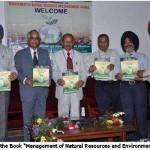REDD+ Rows
Another ‘hot’ issue at Cancun – one that has been steadily gaining ground since 2005 – is schemes that provide developing countries with incentives for reducing emissions from deforestation and forest degradation (REDD). According to the Intergovernmental Panel on Climate Change (IPCC), deforestation and forest degradation contribute about 17 per cent of global emissions and reducing them offers a quick and effective mitigation option.
The ‘+’ in ‘REDD+’ acknowledges the role of conservation, sustainable forest management and enhancement of carbon stocks in aiding these efforts. It was introduced in the Bali Action Plan and has been discussed in various fora since. But how to set up, and implement, REDD+ remains hotly contested and the draft negotiating text on this remains bracketed.
Some specific issues within REDD+ that still require consensus before a global climate deal can be reached include:
- rights of indigenous people and forest-dependent communities – if these are not respected and protected, indigenous communities may find that they do not reap any of the potential poverty reduction, sustainable development or ecological benefits from REDD+ payments. This seems especially cruel given that indigenous populations are often stewards of the forests, supporting ecosystems services, biological conservation and the maintenance of long-standing cultures;
- market mechanisms, including approaches that rely on economic incentives, market forces, or financial mechanisms to encourage regulated entities to reduce emissions, discharges and waste generation, or generally improve environmental performance;
- eligibility criteria that determine how funding is allocated to forest-related activities.
Tricky Targets
Perhaps the most contentious issue in global climate talks is emissions reduction targets beyond 2012.
The need to reduce emissions is clear – if we don’t, global temperatures will continue to rise, exacerbating the impacts of climate change. Under the UNFCCC, a special group – the Ad hoc Working Group on Further Commitments for Annex 1 Parties under the Kyoto Protocol (AWG-KP) – has been trying to establish post-2012 emissions reduction targets since 2006. But despite more than four years of work, it has made little progress.
For many developing countries, a second commitment period of the Kyoto Protocol (that is, emissions reduction targets post-2012) is a pre-requisite for any global climate deal. The G77 and China, for example, have said that they will not compromise on a second commitment period.
But one of the biggest problems facing the working group is that countries cannot agree on how to set the targets for this period. Developed countries, hard hit by the economic crisis, want a bottom-up approach where they can set targets that suit their national situation and aggregate them into a global goal. But many developing countries are concerned that this approach is not stringent enough – when individual targets are aggregated, they fall far short of what science says is required to avoid increasing global temperatures above the ‘tipping point’ of 2°C. So the developing world is pushing for a top-down approach that sets a global target, rooted in science, and then distributes contributions to that target based on an agreed methodology.
With neither side looking likely to give much ground, negotiations in Cancun may prove difficult.

Beyond Cancun
Resolving each of the issues outlined above will be critical to establishing a global climate deal that parties to the UNFCCC are happy to sign. But the breadth and depth of disputes makes it highly unlikely that a binding agreement will be reached in Cancun.
The disappointing result in Copenhagen has led to a wide-spread loss of faith in global climate change negotiations. The UNFCCC has spent much of the past year simply assessing the status of its negotiations, agreeing ways of working and looking for ways to rebuild trust in the process.
Hopes are much lower this time round – both the UNFCCC executive secretary and the UN general secretary have admitted to reduced expectations of a substantial outcome. And across the board, people are already looking beyond Cancun – to next year’s talks in South Africa – as the likeliest place for a long-term global climate change agreement to be reached.
Notes:
This briefing has been produced with the generous support of Danida (Denmark),DFID (UK), DGIS (the Netherlands), Irish Aid, Norad (Norway) and Sida(Sweden).
[1] For a fuller discussion on adaptation finance, see Ciplet, D. et al. 2010. Fast-Start Adaptation Funding: Keeping Promises from Copenhagen. Briefing, IIED, London. www.iied.org/pubs/display.php?o=17088IIED
[2] See UN Climate Change Conference in Bali. http://unfccc.int/meetings/cop_13/items/4049.php

About IIEA
The International Institute for Environment and Development (IIED) is an independent, non-profit research institute working in the field of sustainable development. IIED provides expertise and leadership in researching and achieving sustainable development at local, national, regional and global levels. For more information, visit www.iied.org.














